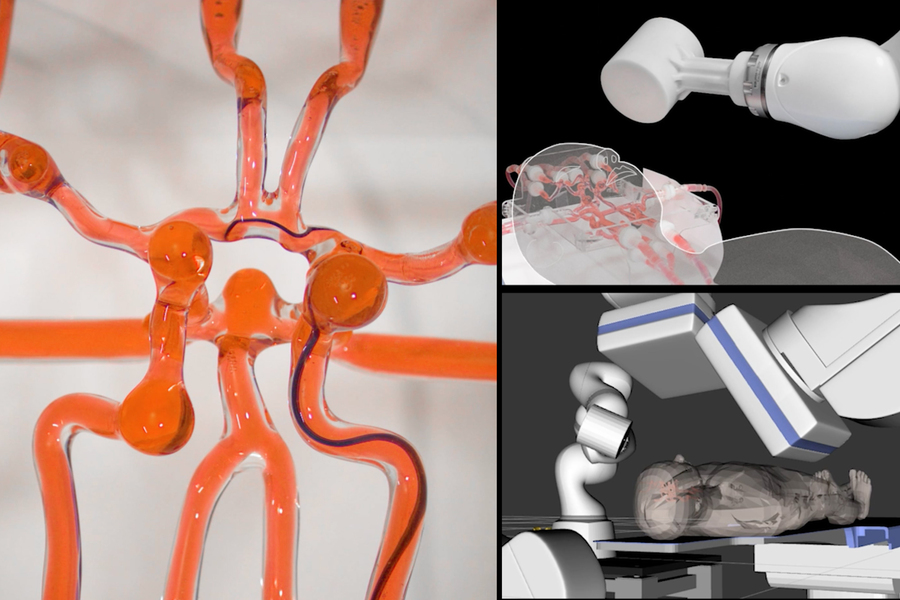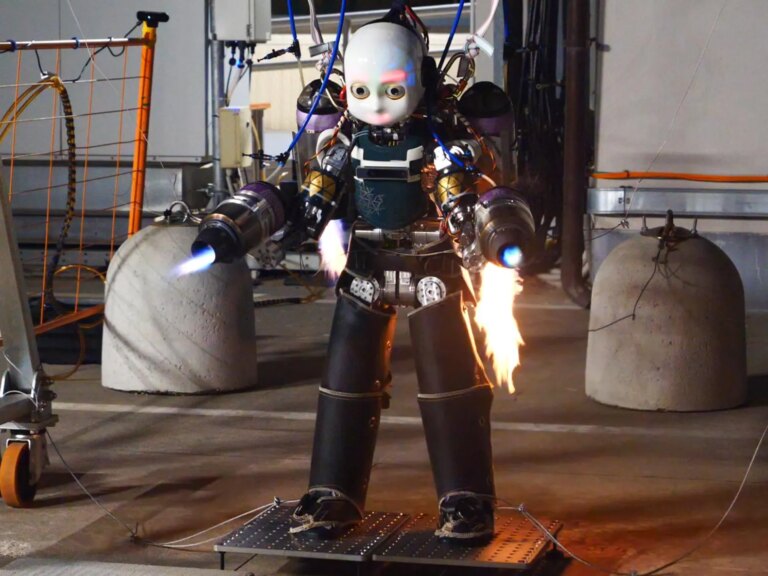MIT engineers built a robot for emergency stroke surgeries
Remote robotic-assisted surgery is far from new, with various educational and research institutions developing machines doctors can control from other locations over the years. There hasn’t been a lot of movement on that front when it comes to endovascular treatments for stroke patients, which is why a team of MIT engineers has been developing a telerobotic system surgeons can use over the past few years. The team, which has published its paper in Science Robotics, has now presented a robotic arm that doctors can control remotely using a modified joystick to treat stroke patients.
That arm has a magnet attached to its wrist, and surgeons can adjust its orientation to guide a magnetic wire through the patient’s arteries and vessels in order to remove blood clots in their brain. Similar to in-person procedures, surgeons will have to rely on live imaging to get to the blood clot, except the machine will allow them to treat patients not physically in the room with them.
There’s a critical window of time after a stroke’s onset during which endovascular treatment should be administered to save a patient’s life or to preserve their brain function. Problem is, the procedure is quite complex and takes years to master. It involves guiding a thin wire through vessels and arteries without damaging any of them, after all. Neurosurgeons trained in the procedure are usually found in major hospitals, and patients in remote locations that have to be transported to these larger centers might miss that critical time window. With this machine, surgeons can be anywhere and still perform the procedure. Another upside? It minimizes the doctos’ exposure to radiation from X-ray imaging.
During their tests, the MIT engineers only had to train a group of neurosurgeons for an hour to use the machine. By the end of that hour, the surgeons were able to successfully use the machine to remove the fake blood clots in a transparent model with life-size vessels replicating the complex arteries of the brain.
MIT professor and team member Xuanhe Zhao said:
“We imagine, instead of transporting a patient from a rural area to a large city, they could go to a local hospital where nurses could set up this system. A neurosurgeon at a major medical center could watch live imaging of the patient and use the robot to operate in that golden hour. That’s our future dream.”
You can watch a demo of the machine below:
All products recommended by Engadget are selected by our editorial team, independent of our parent company. Some of our stories include affiliate links. If you buy something through one of these links, we may earn an affiliate commission.





